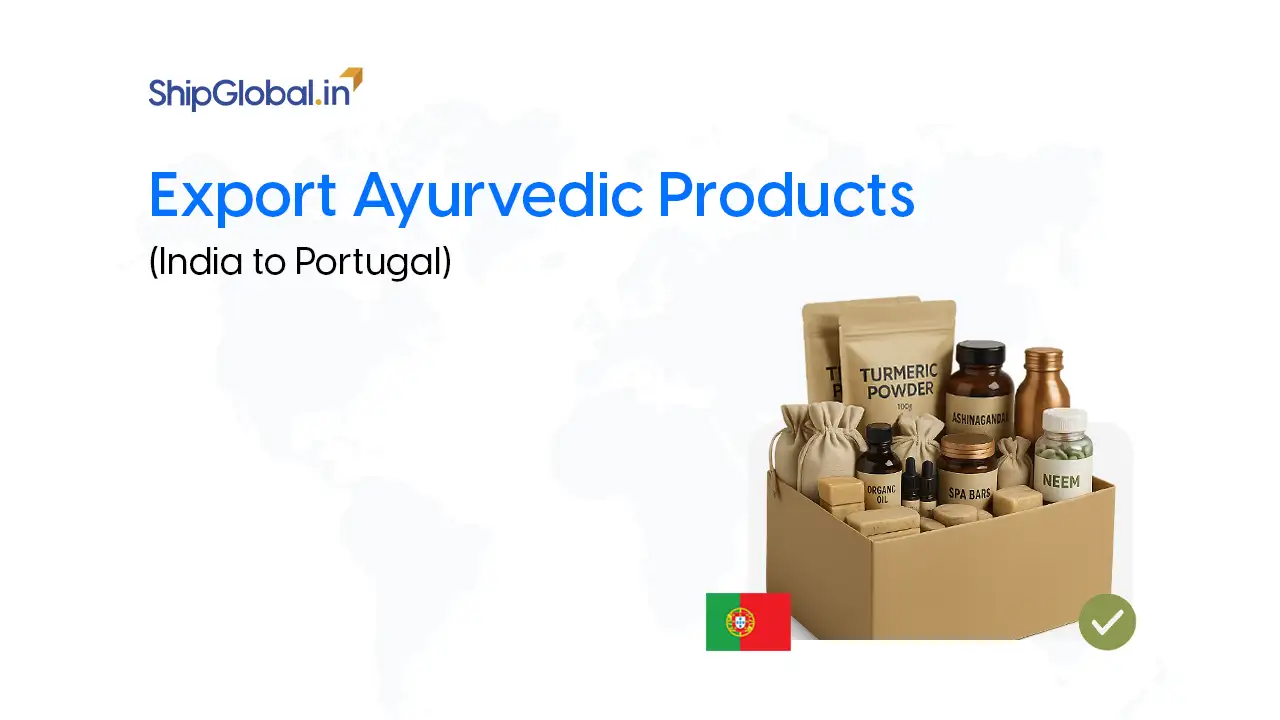In today’s hyper-competitive global marketplace, the cost of exporting significantly determines a country’s trade success. Recognizing this, the Indian government launched the RoDTEP scheme.
RoDTEP full form is Remission of Duties and Taxes on Exported Products, it was made to make Indian exports globally competitive. This WTO-compliant export scheme in India replaces older incentive programs like MEIS, aligning India’s trade policies with global trade rules while directly benefitting exporters, especially MSMEs.
Let’s explore in depth what the RoDTEP scheme entails, how it works, what the benefits offered are, who qualifies under the Remission of Duties and Taxes on Exported Products Scheme, and how to navigate the scheme’s refund process.
What is the RoDTEP Scheme
The Remission of Duties and Taxes on Exported Products Scheme was introduced on January 1, 2021, replacing the MEIS and SEIS export schemes. Under RoDTEP, exporters receive reimbursement for previously non-recoverable duties and taxes, including:
- VAT on fuel used in transportation
- Electricity duties
- Mandi tax
- Stamp duty on export documents
- Embedded GST and other indirect taxes
These levies were not refunded earlier under any mechanism, leading to hidden costs in the supply chain. This scheme addresses this gap, ensuring that such expenses are remitted, helping exporters offer competitive international products.
The implementation of this scheme is fully automated and digital, making it efficient, transparent, and scalable.
Remission of Duties and Taxes on Exported Products Scheme vs Merchandise Exports from India: What Changed
Understanding RoDTEP vs MEIS is essential for exporters transitioning to this new regime. Here are the main differences:
| Feature | MEIS | RoDTEP Scheme |
| WTO Compliance | Non-compliant | Fully compliant |
| Nature of Incentive | Fixed % of FOB value | Variable, based on unrefunded taxes |
| Mode of Benefit | Duty credit scrip | RoDTEP e-scrip |
| Sectors Covered | Select sectors | All sectors (subject to notifications) |
| Transparency | Limited | Automated and fully transparent |
The government designed this scheme to ensure India follows WTO trade guidelines, addressing the challenges MEIS faced due to international scrutiny and legal hurdles.
RoDTEP Eligibility: Who Can Claim the Benefits
The RoDTEP scheme covers a wide range of exporters to ensure broad eligibility. However, certain conditions and exclusions apply.
Eligible:
- All types of exporters: Manufacturer exporters, merchant exporters, job-workers.
- Sectors notified by DGFT.
- RoDTEP for MSMEs strongly focuses on encouraging smaller players to claim benefits.
- Exporters with a valid IEC code.
- Exporters shipping under free shipping bills or against payment.
Not Eligible:
- SEZ units and EOUs (unless notified).
- Exporters claiming benefits under other incentive schemes for the same shipment.
- Exports through transhipment.
The Ministry of Commerce and Industry also determines RoDTEP eligibility based on specific product categories and sectors it notifies Exporters should regularly check updated lists of covered products.
RoDTEP Scheme Rates
RoDTEP (Remission of Duties and Taxes on Exported Products) scheme rates vary by product and are specified at the 8-digit HS Code level.
Key points about the rates:
1. Rates usually range from 0.3% to 4.3% of the FOB (Free on Board) export value.
2. Some commodities like textiles, leather, marine products, agriculture, and engineering goods often receive higher RoDTEP scheme rates.
3. Rates are notified by the DGFT (Directorate General of Foreign Trade) and published in the RoDTEP rate schedule under Appendix 4R.
If you want to know the latest updates related to this scheme, check out the ICEGATE portal or the DGFT notification.
Remission of Duties and Taxes on Exported Products Scheme Benefits for Exporters
The RoDTEP benefits are substantial, offering direct monetary advantages that can improve profit margins:
- Refund of Previously Non-Recoverable Taxes: This includes indirect taxes on inputs like fuel, power, transport, etc.
- Digitally Transferable Credit: Exporters receive RoDTEP e-scrips in their ICEGATE account and use them to pay customs duties or transfer them to others.
- Wider Export Base: The scheme covers almost all products, enhancing inclusivity.
- Support for MSMEs: With a dedicated focus on RoDTEP for MSMEs, the scheme provides small businesses with critical financial support.
- No Human Interface: Fully automated digital process minimizes the chances of corruption or delay.
- Boosting Indian Competitiveness: Aligning with global tax neutrality principles improves India’s trade standing.
RoDTEP Rates and Product Coverage
The rates are notified by the DGFT in collaboration with the Ministry of Finance. These rates are product-specific and calculated based on the actual embedded taxes that remain unrefunded, forming a crucial part of the export refund process in India.
Rates vary depending on:
- Sector (e.g., textiles, agriculture, leather, pharma, steel)
- Nature of the input supply chain
- Type of duties embedded
Exporters can find the rates applicable to their HS code on the DGFT website or consult with customs brokers.
Example:
- Cotton garments: 4.3%
- Leather footwear: 2.5%
- Engineering goods: Varies by product
Always refer to the latest RoDTEP guidelines for up-to-date rates and sector notifications.
RoDTEP Refund Process: Step-by-Step
The ICEGATE portal streamlines the refund process by allowing exporters to quickly and digitally receive their RoDTEP e-scrips Here’s how it works:
Step 1: Declare Intention
- While filing the shipping bill, select “Yes” under RoDTEP claim.
Step 2: Processing by Customs
- Customs will process the claim post-export on the basis of product-specific rates.
Step 3: Scroll Generation
- The system generates an electronic scroll (statement) to confirm the approved refund
Step 4: Credit to ICEGATE Account
- Exporters will receive the amount in the form of a RoDTEP e-scrip.
Step 5: Usage of e-Scrip
- Exporters can use these e-scrips to pay basic customs duty or sell them in the open market through ICEGATE. Make sure your IEC is linked to your ICEGATE portal to access these benefits.
RoDTEP for MSMEs: Unlocking New Growth
A key objective of the scheme is to democratize export incentives. RoDTEP for MSMEs is especially impactful, as small exporters often face tight margins and limited access to support.
With RoDTEP benefits, MSMEs can:
- Offset hidden input costs
- Improve international price competitiveness
- Increase working capital via the e-scrip
- Compete on a level playing field with larger players
Whether you export handlooms, handicrafts, engineering goods, or Agri-products, the scheme ensures you’re not left behind.
Conclusion
The Remission of Duties and Taxes on Exported Products scheme is more than a compliance-driven initiative; it’s a powerful tool for economic growth, employment generation, and export expansion. By refunding taxes that were never accounted for earlier, this scheme benefits every type of exporter, from corporate giants to MSMEs.
Key takeaways:
- Ensure you understand eligibility before filing shipping bills.
- Check product-specific rates and sectors.
- Track your RoDTEP e-scrip via ICEGATE for timely utilization.
- Familiarize yourself with the RoDTEP refund process to avoid delays.
- Compare RoDTEP vs MEIS to see how this scheme better aligns with India’s global trade goals.
With transparency, compliance, and inclusivity at its core, the RoDTEP scheme represents India’s long-term vision for a fair, tax-neutral, and globally competitive export system.
LATEST UPDATE
In a welcome move for exporters, the DGFT has announced that RoDTEP benefits will be reinstated from June 1, 2025, for the following categories:
- Advance Authorization (AA) holders
- Export-Oriented Units (EOUs)
- Special Economic Zones (SEZs)
These exporters were temporarily excluded from the scheme between February 5 and May 31, 2025, causing uncertainty and financial strain for many. The reversal ensures that these units can once again claim refunds for embedded taxes and duties, in line with the core objective of RoDTEP to maintain India’s global trade competitiveness through tax neutrality.
Exporters in these categories should update their systems and processes accordingly to resume availing benefits from the effective date.
FAQs
The government introduced the scheme to replace older ones like MEIS and SEIS, which did not comply with World Trade Organization (WTO) rules. It provides a fair and transparent method to refund indirect taxes that exporters couldn’t recover earlier, bringing India’s trade practices in line with global standards.
Under the scheme, exporters are refunded indirect taxes that could not be claimed earlier, such as VAT on transportation fuel, electricity duties, mandi tax, stamp duty on export documents, and embedded GST, among others.
The scheme is open to a broad range of exporters, including manufacturer exporters, merchant exporters, and job-workers. Exporters must have a valid Importer Exporter Code (IEC), and they must export goods under free shipping bills or against payment. The scheme covers only the products and sectors that the Directorate General of Foreign Trade (DGFT) specifically notifies.
Exporters operating from Special Economic Zones (SEZs) or as Export-Oriented Units (EOUs), unless specifically notified, are not eligible for the scheme. Exporters lose RoDTEP benefits if they claim incentives under another export scheme for the same shipment or export goods through transshipment.
Yes, the RoDTEP refund process is simple if done correctly. Exporters must declare RoDTEP in the shipping bill, ensure EGM and e-BRC are filed, and then claim the rebate via the ICEGATE portal. Once scrolls are generated and linked to a valid bank account, the refund is automatically credited.









